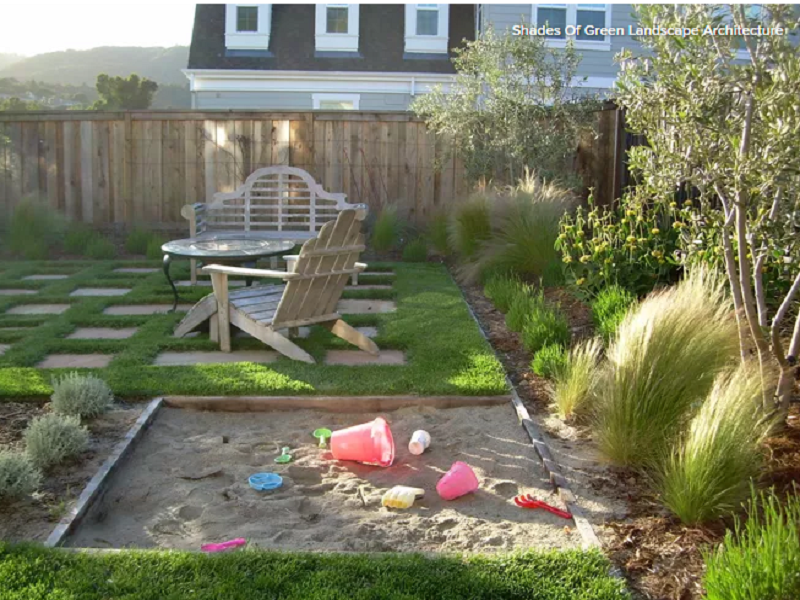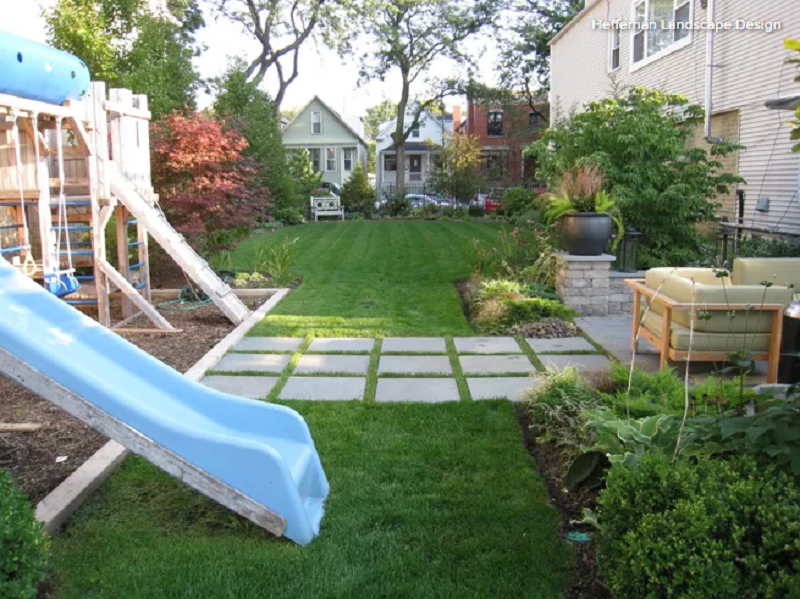via houzz: The summer of 1968, my parents were in the market for their first home. In a neighborhood they liked, they found two houses, side by side, up for sale. After they toured both, they decided on the slightly smaller one on the corner, and moved in a few weeks before my older brother was born. Three more of us followed in steady succession.
The people who bought the house next door were an older couple. If you restrict the definition of “good neighbors” to how they keep their homes, then the Lincolns were the best. They kept their house and yards immaculate, but they were unfriendly. His constant expression was disapproval mixed with suspicion, and she always seemed to be discovering a bad smell.
My parents took care of our home and yards, but in the front our lawn met theirs, and the line of demarcation was as obvious as if there had been a fence. Second only to the care and keeping of his enormous Cadillac, lawn maintenance was Mr. Lincoln’s life’s work. When a ball fell across the property line, one of us would retrieve it, running as if the grass were lava.
My siblings and I were taught to be respectful of all of our neighbors’ property and the neighbors themselves, but the Lincolns were such a couple of curmudgeons, our mere existence was an affront. This sort of disdain wears on even the strongest psyche. When we moved it was such a relief to have acres of woods and fields to roam through and to be free of constant suspicion and disapproval.
When I grew up and bought a home of my own, I discovered we had the kindest neighbors in the world, but even so I tried to make sure my children weren’t wearing out our neighbors’ warmest welcome.
Here are my recommendations for helping your children learn how to be good neighbors.
1. Establish boundaries and routines with your neighbors first. This sounds obvious, but in the busyness of life, simple things can be forgotten or taken for granted. Ask your neighbors what they would want your children to do if a ball goes into their yard. May your child walk into their yard and retrieve it, or would your neighbor prefer a knock on the door first? Are there any special considerations? Does your neighbor work at night, and would he appreciate quiet right outside his bedroom window during the day? Asking simple questions like these will show you care about and respect your neighbor’s wishes and needs.
2. Teach your children literal boundaries. When they are quite young, explain where your property ends and where your neighbors properties’ begin. Explain to your kids what you and the neighbors discussed for ball retrieval or anything else. This is especially important if your neighbors have animals.
3. Explain figurative boundaries. Your child may be entirely on your own property but yelling his or her sweet head off. Although you may be able to tune this out entirely, your neighbor cannot. Kids shouldn’t need to skulk around whispering, but a basic understanding of other people’s needs will serve your child forever.
4. Don’t cover it up. Accidents will happen. Teach your child what to do when things go wrong. Talk through different scenarios: kids are playing ball and accidentally break a neighbor’s window. The instinct is to run, but that’s no solution. Help children decide how to find and ask for help when they’re scared and most tempted to make a bad situation worse.
5. Teach your children to look for opportunities to help and serve. Is a neighbor struggling to carry in a carload of groceries? A simple, “May I give you a hand?” could make a neighbor’s day and give your child the opportunity to experience the great feeling that comes from helping others.
6. Ask for feedback. Keep an open conversation with your neighbors. Most people won’t rat out your kid for being a pest, but if you check in and ask how things are going, your neighbor may feel freer to express an annoyance that’s easily corrected.
Learning to be a good neighbor while still young will help your child find his or her place in the world.






